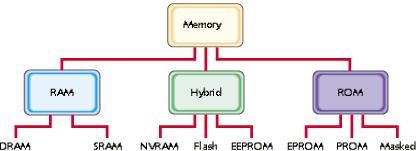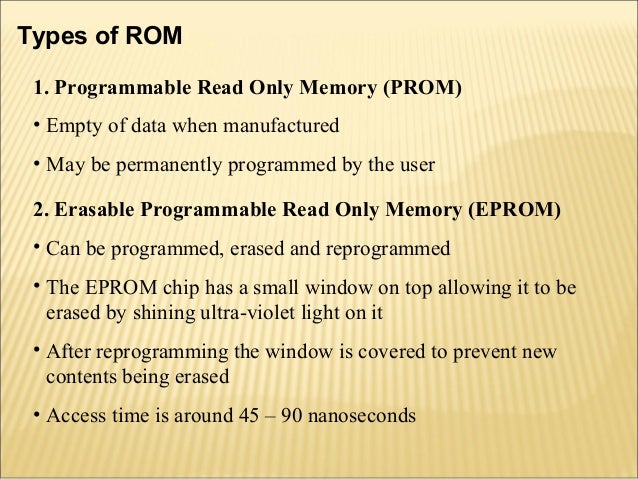Rom Prom Eprom Eeprom Pdf
10 notes & November 4, 2011 ROM, PROM, EPROM, EEPROM. So in my unending quest to learn about microcontrollers and such, you inevitably have to deal with memory, and. EEPROM (also E 2 PROM) stands for electrically erasable programmable read-only memory and is a type of non-volatile memory used in computers and other electronic. • Cheaper than EPROM or EEPROM and so often used in. • EEPROM: Electrically Erasable, Programmable, Read Only Memory • flash EEPROM: a hybrid of the two.


A 93C46A EEPROM (also E 2PROM) stands for electrically erasable programmable read- only memory and is a type of used in computers and other electronic devices to store relatively small amounts of data but allowing individual bytes to be erased and reprogrammed. Driver Usb Motorola W375 Download. EEPROMs are organized as arrays of. EEPROMs can be programmed and erased in-circuit, by applying special programming signals. Originally, EEPROMs were limited to single byte operations which made them slower, but modern EEPROMs allow multi-byte page operations.
It also has a limited life for erasing and reprogramming, now reaching a million operations in modern EEPROMs. In an EEPROM that is frequently reprogrammed while the computer is in use, the life of the EEPROM is an important design consideration. Unlike most other kinds of non-volatile memory, an EEPROM typically allows bytes to be read, erased, and re-written individually. Contents • • • • • • • • • • • • History [ ] Eli Harari at Hughes Aircraft invented the EEPROM in 1977 utilising Fowler-Nordheim tunneling through a thin floating gate. Hughes went on to produce the first EEPROM devices.
Apple Motion 5 For Mac. In 1978, George Perlegos at developed the Intel 2816, which was built on earlier technology, but used a thin gate oxide layer enabling the chip to erase its own bits without a UV source. Perlegos and others later left Intel to form, which used on-device to supply the high voltages necessary for programming EEPROMs. Electrical interface [ ] EEPROM devices use a serial or parallel interface for data input/output. Serial bus devices [ ] The common serial interfaces are,,,, and. These use from 1 to 4 device pins and allow devices to use packages with 8-pins or less. Gaogaigar Final Ost. A typical EEPROM serial protocol consists of three phases:, Address Phase and Data Phase.
The OP-Code is usually the first 8-bits input to the serial input pin of the EEPROM device (or with most I²C devices, is implicit); followed by 8 to 24 bits of addressing depending on the depth of the device, then the read or write data. Each EEPROM device typically has its own set of OP-Code instructions mapped to different functions. Common operations on EEPROM devices are: • Write Enable (WRENAL) • Write Disable (WRDI) • Read Status Register (RDSR) • Write Status Register (WRSR) • Read Data (READ) • Write Data (WRITE) Other operations supported by some EEPROM devices are: • Program • Sector Erase • Chip Erase commands Parallel bus devices [ ] Parallel EEPROM devices typically have an 8-bit data bus and an address bus wide enough to cover the complete memory. Most devices have chip select and write protect pins. Some also have integrated parallel EEPROM.



